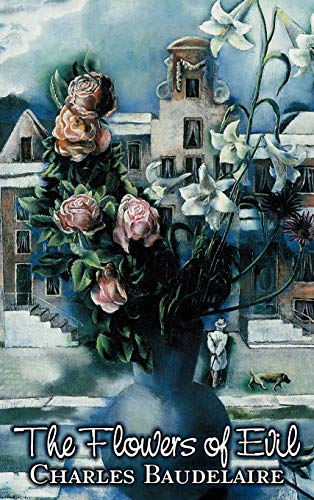

These were later published in Brussels in a small volume entitled Les Epaves (Scraps or Jetsam)." These poems were "Lesbos" "Femmes damnees (A la pale clarte)" (or "Women Doomed (In the pale glimmer.)") "Le Lethe" (or "Lethe") "A celle qui est trop gaie" (or "To Her Who Is Too Gay") "Les Bijoux" (or "The Jewels") and " Les "Metamorphoses du Vampire" (or "The Vampire's Metamorphoses"). Six poems from the work were suppressed and the ban on their publication was not lifted in France until 1949. As a consequence of this prosecution, Baudelaire was fined 300 francs.

The author and the publisher were prosecuted under the regime of the Second Empire as an outrage aux bonnes m urs ("an insult to public decency").

The poems deal with themes relating to decadence and eroticism. First published in 1857 (see 1857 in poetry), it was important in the symbolist and modernist movements. Translated into English Verse by Cyril Scott FULL ENGLISH TRANSLATION - COMPLETE Les Fleurs du mal (English: The Flowers of Evil) is a volume of French poetry by Charles Baudelaire. For highlights of Les Fleurs du mal visit The Met on Google Arts & Culture.Over 50 Scandalous Poems Relating to Decadence and Eroticism. Produced in conjunction with the exhibition Rodin at The Met, on view at The Met Fifth Avenue, September 16, 2017, through January 15, 2018. He also included sketches made after sculptural compositions, such as Orpheus and Eurydice and The Thinker, enjoying the multiplicity of symbolic resonances present in his work. His illustrations echo drawings made during the germination of that project in the early 1880s, including three examples of his "black drawings," so-called for the darkness of their content and ink wash. In 1918, the Société des Amis du Livre Moderne (Society of Friends of the Modern Book) published 200 facsimile copies, of which this is number 74.īaudelaire's poetry had inspired Rodin during the conception of his major monument The Gates of Hell. In 1887, publisher and bibliophile Paul Gallimard asked Auguste Rodin to illustrate his personal copy of the rare 1857 edition of Charles Baudelaire's The Flowers of Evil (now in the Musée Rodin, Paris).


 0 kommentar(er)
0 kommentar(er)
